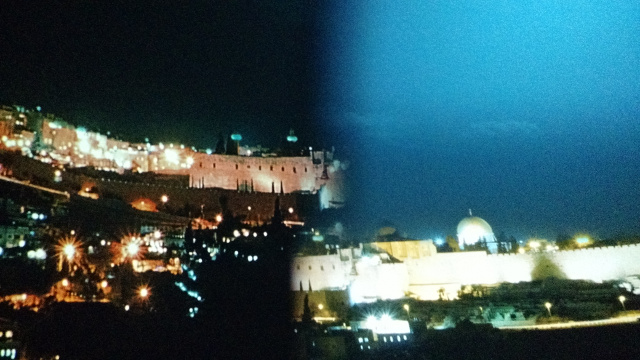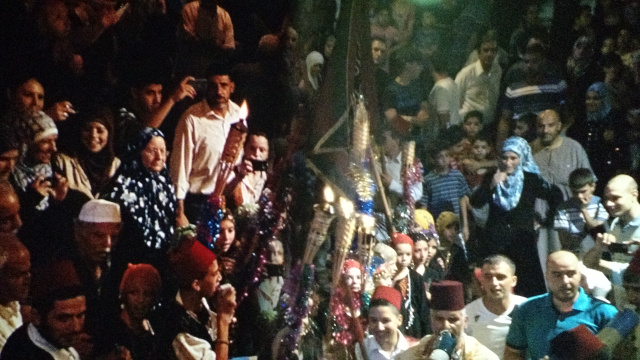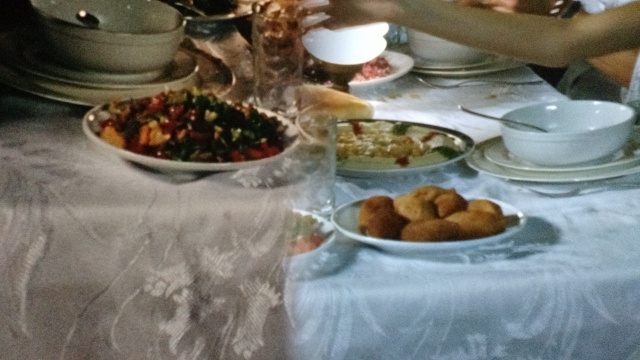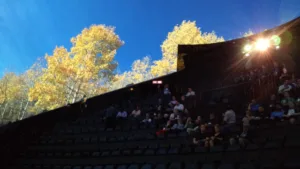That was the headline that enticed me to fly to Toronto and the annual Giant Screen Cinema Association International Conference and Trade Show (GSCA). This event is all about the latest planetarium, IMax and other larger format curved screens – primarily in a dome or partial dome configuration. It attracts content creators, technology suppliers and operators of these theaters to see new content and discuss technology trends.
The session that was held in the Ontario Science Center featured a temporary True 8K installation in the existing 15/70 film-based OmniMax 24-meter domed theater. This allowed side-by-side comparisons of this new digital solution vs. the IMax film-based gold standard. Yes, for such large screens, film is still the gold standard and one of the last bastions where this is true. While the technical committee of the GSCA is inching theater operators in this direction, it remains a tall order to exceed the film quality.
First:Resolution
The first challenge is resolution. In screens this size and immersive, you don’t want to see pixels. The giant frame of film used in the OmniMax theaters, sometime called IMax Domed theaters, ensure a non-pixelated image. To date, several 8K IMax domed theaters have been installed using eight 4K projectors. But these projectors must all be blended and warped over the domes surface, effectively reducing the resolution along any meridian to about 6.5 megapixels.
The demo at the Ontario Science Center featured 10 Christie Mirage 30 4K projectors that after blending and warping, created a “true 8K” image meaning 8K x 8K or 8K along any meridian in the dome. The demo was created by Evans & Sutherland and they worked closely with FotoKem to create the content for the demos.
First, a little background. IMax theaters use flat screens whereas OmniMax theaters used domed screens. The OmniMax projector has a different lens (fisheye) and the content may be adjusted slightly to fit the screen shape compared to the flat screen. The format is roughly 4:3 and with the IMax film camera, resolution should be in the 8Kx8K range. Clearly, no single digital projection solution can create this image, which is why a market remains for this film format. The dome is typically tilted and from the center seat extends 100 degrees upward, 22 degrees downward and 180 degrees horizontally. Content has historically been captured on 65mm film stock with a fisheye lens, but a lot of new content that was shown was captured with digital cameras.
The capture side remains an issue as many cinema cameras are now wide aspect and not well matched to the IMax aspect ratio. The highest resolution on these cameras is approaching 8K but most are in the 6K to 4K range. For the OmniMax, that means cropping and scaling vertically or just scaling vertically. While such scaling operations are quite good, any processing compromises the original image, adding some softness.
The other method highlighted to good effect at the event, was the use of digital still cameras to create time lapse videos. There are more options for higher resolution and aspect ratios with this approach.
Content is Mixed
The situation for IMax Domed theaters is that the industry is in transition. Content is coming as a mixture of CG, film-based and digital camera capture. Display can also be film or digital projection. This creates a need for workflows that have a digital output and a film output. As was pointed out by the organizers, a hybrid approach that mixes content formats to create film and digital outputs will not be as pristine as an all-film or an all-digital workflow. One of the goals of the demo was to see if the technology is ready to move to an all-digital workflow yet.
For the demo, both film and digital projection solutions were shown separately and side-by-side. The IMax projector booth sits in the center of the seating area, but for the digital projection part, six of the Mirage projectors were set up in a booth at the top of the seating area with four mounted in front of the seats on the floor in front of the screen. For a permanent installation, these can be placed on the sides of the theater and hidden.
Interestingly, the Science Center staff told us that this dome was the first time they had even seen the very top of the domed screen filled with content, which the four projectors in the front of the theater enabled (see photo below).
Evans and Sutherland did a trial set of the configuration on another dome and created custom masks to fit over each projector made to aid in the blending. The result of this blending was very impressive with a uniform color field showing no obvious blend areas. Of course, having multiple projectors blended over a screen raises the overall black level, which was clearly higher than the film-based projector. I did not witness the luminance and color calibration, but I was told it typically takes about 45 minutes for a set up like this.
Calibration
The center of screen luminance for the film projector is nominally 3 ftL, which falls off toward the edges. The Evans and Sutherland team tried to match this film luminance but miscalculated a bit and ended up with about 4 ftL. This level was much more uniform over the entire screen due to the use of the 10 projectors and the blending/warping/calibration procedure. The final in-room contrast for the film projector was designed to achieve about 10:1 with all of the cross illumination from the domed screen. The native contrast of the Mirage projectors is around 2,000:1, but this contrast range was shifted upwards compared to the film projector. The final in-room contrast for the digital solution was not measured, but was probably a bit lower than 10:1.
I did request and witnessed a geometric calibration, however. This sequence takes about 3-4 minutes and features four cameras looking at the screen. Each projector flashes several patterns in sequence and the software calibrates the mesh profiles for each projector. The mesh profiles are loaded into 40 GPUs with each GPU responsible for rendering content on a 1920×1080 part of each projector’s 4K image. All the GPUs are synchronized to a master PC for seamless playback at 50 Mbps via Digistar 6 planetarium/dome cinema system.
Performance Review
For the main part of the demo, content from the all-film captured “Alaska” was shown along with a scene from a piece called “Jerusalem” which featured a mixture of film and digital captured content. With the help of FotoKem, film and digital masters of each sequence were created. These were then shown first in full screen film, then full screen digital and then side-by-side.
The first thing I noted about the Alaska clip was the very shallow depth of field. That makes everything except the animals in the center of the frame out of focus. Secondly, all content was acquired and projected at 24 fps (actually the digital was triple-flashed) so the motion blur was quite evident even on slow pans or object movement. While both of these issues may not be objectionable on a small screen, on a big immersive screen, I found it slightly disorienting and annoying.
In the photos below, the first one of the bear and water shows the brightness difference and a color shift between the two (film on left and digital on right). The second one from the Jerusalem clip shows a nighttime scene and the elevated black level of the digital solution. The third shot shows the loss of black level details in the film solution. The fourth shot shows the difference in the diffuse white.




Third, the contrast for both film and digital was quite low and the colors not particularly saturated. The colors may have been content related, but they likely also looked desaturated due to the low contrast. With consumers seeing gorgeous HDR TVs in retails stores and their homes, this image quality was clear a notch or two below it. Yes, it is way bigger than you can get in your home, but is that enough to draw audiences? The Mirage projectors featured six UHP lamps so it were unlikely to be tuned to anything beyond rec, 709. However, these projectors can be fitted with an RGB laser light source that would offer higher contrast, HDR and wide color gamut. I suspect dome theaters may have to seriously consider this option in the future – but they are significantly more expensive, so I am not optimistic that many will be sold.
After looking at the content here are a few of my observations:
- The digital content was noticeably brighter – much more than you would expect from an increase of 3 to 4 ftL.
- The digital diffuse white were brighter and less warm (yellow) compared to the film diffuse white
- Film projector weave was clearly evident on a static test pattern shown in side by side format. This slight movement of the image on the screen will reduce apparent resolution
- Image resolution looked nearly identical – no pixels were evident even close up (although you could see the screen perfs clearly)
- The film projector’s black level clearly much lower than the digital solution, but the team did not measure either. One participant said he saw crushing of the blacks in the film version as the details were evident in the digital version.
- Colors in the digital version were clearly different and looked brighter and more saturated than the film image. Presumably, FotoKem tried to master them equivalently, but it is unclear what accounted for the difference. One participant commented that he thought the skin tone in the film solution looked better, but that may have been a partial impact of the warmer diffuse whites.
- Noise levels in each solution looked similar. FotoKem removed film grain and digital noise in the mastering process.
- Content captured in 4K and upscaled to 8Kx8K looked a little soft on this giant screen
We also saw some computer generated 2D and 3D content as well, following this side by side. This looked particularly good on the digital solution as the resolution, focus and depth of field issues were not an issue. However, 24 fps playback still has motion blur and the 3D content was too dim.
120 fps Demo
Finally, there was a demo of some test content captured at 120 fps and played back on the 10 Mirage projectors. Content was captured and mastered by Pierre Routhier of Digital Trouble Maker and consisted of three clips of surfers in Hawaii. The first was a static shot with three focal lengths. The second featured variable pan rates and the third was a hybrid frame rate shot with the waves running at normal rate and the sky running a time lapse sequence.
The clips were captured in 4K at 120 fps as current cameras and storage devices are not able to capture 8K at 120 fps. The content was then mastered and scaled to the full 8Kx8K resolution for the dome demo.
For the variable focal length clip, I didn’t see a lot of difference in motion between the three focal lengths (18, 28 and 50mm). The variable pan sequence was good as pans and object movement that would clearly have motion blur at 24 fps were much crisper at 120 fps. The third clip was very interesting, too, as it showed the ability to create frames with windows running at different frame rates.
Overall, the images looked very nice and did not have that video-like look one gets from video motion interpolation software. However, in follow-up discussions, at least one person did not think the demo was effective for this crowd as the higher frame rate benefits were not clearly pointed out. A comparison to the 24 fps video would have driven this home much better, but Routhier was unable to show that in the demo.
So is this market ready to embrace an all-digital workflow? Overall, I think I found the digital solution superior, but the whole industry must be convinced of this. One area I think might want to be explored more by this industry is the use of multi-camera VR rigs. These can create the 8K plus captures that can allow creation of OmniMax masters may require less processing. For example, why not consider capturing with a rig of 10 4K cameras matched to the geometry of the projectors just demonstrated in the Ontario Science Center? That would require stitching, but no scaling or stretching to create some incredible images.
In conclusion, the progress made with this demo is another important milestone in this journey from film to digital. – CC

